September 2020 - # 04 Some cacti and succulents!

Cacti and succulents are a passion, they are my passion. I can't help but admire all the plants in nature, but today I'll just bring another part of my cacti and succulents.
Huernia Boleana:
It's a succulent of the Apocynaceae family, of the huernia species and the boleana genus.
It's native to Africa.
It gets its name from having been found on the banks of the Bole River in Ethiopia.
It's a small growth plant, it does not exceed 20 cm.
The stems are cylindrical in shape, with spike-like projection edges. Its light green when it is in the shade, if it's exposed to the sun it changes its color to dark green.
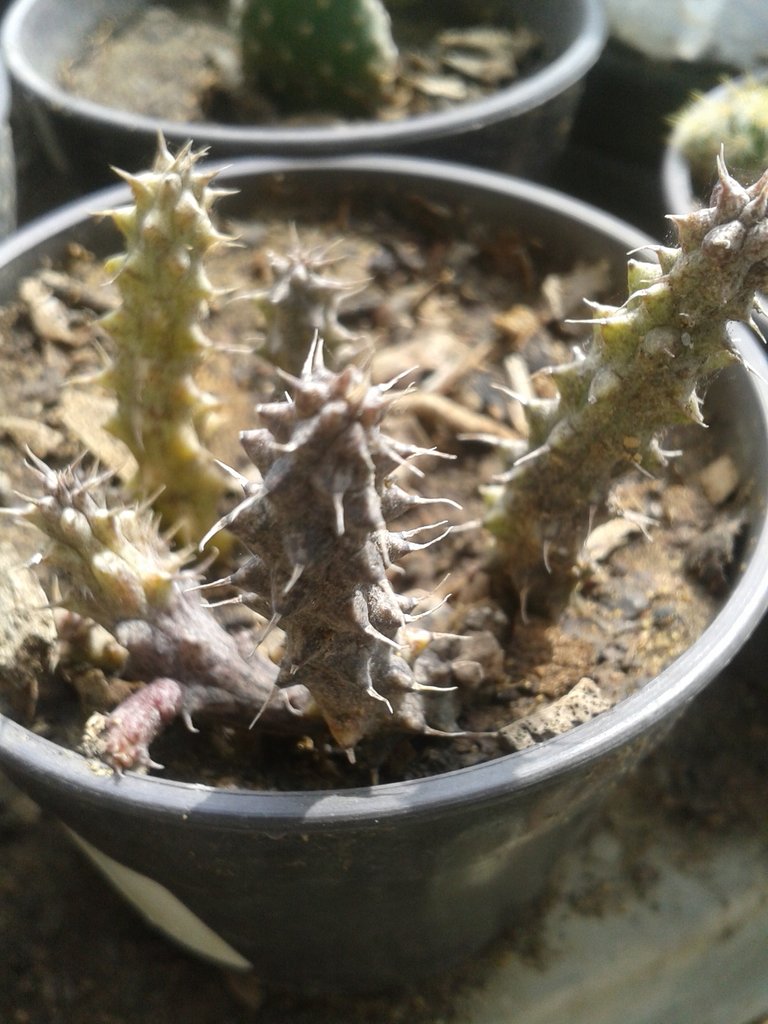
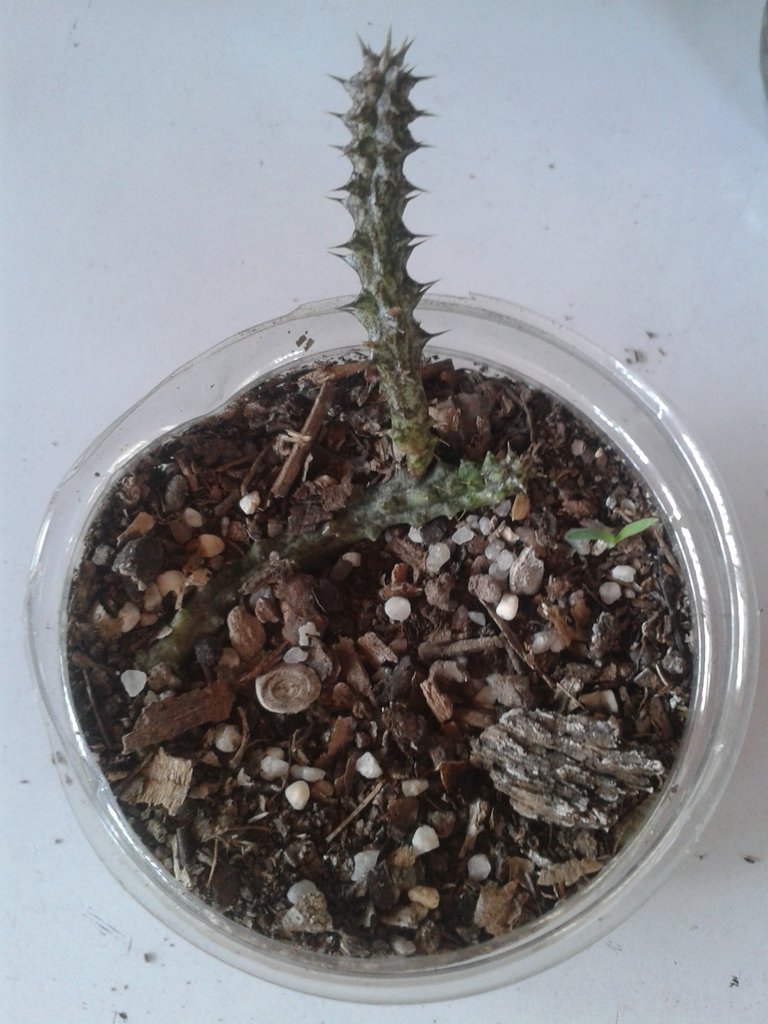
It has a flower of about 2cm in length with the shape of a small bell that opens at its upper end with the shape of a starfish with five peaks. The background is white with multiple intense red stipplings. The entire surface is covered by a very short hairiness.
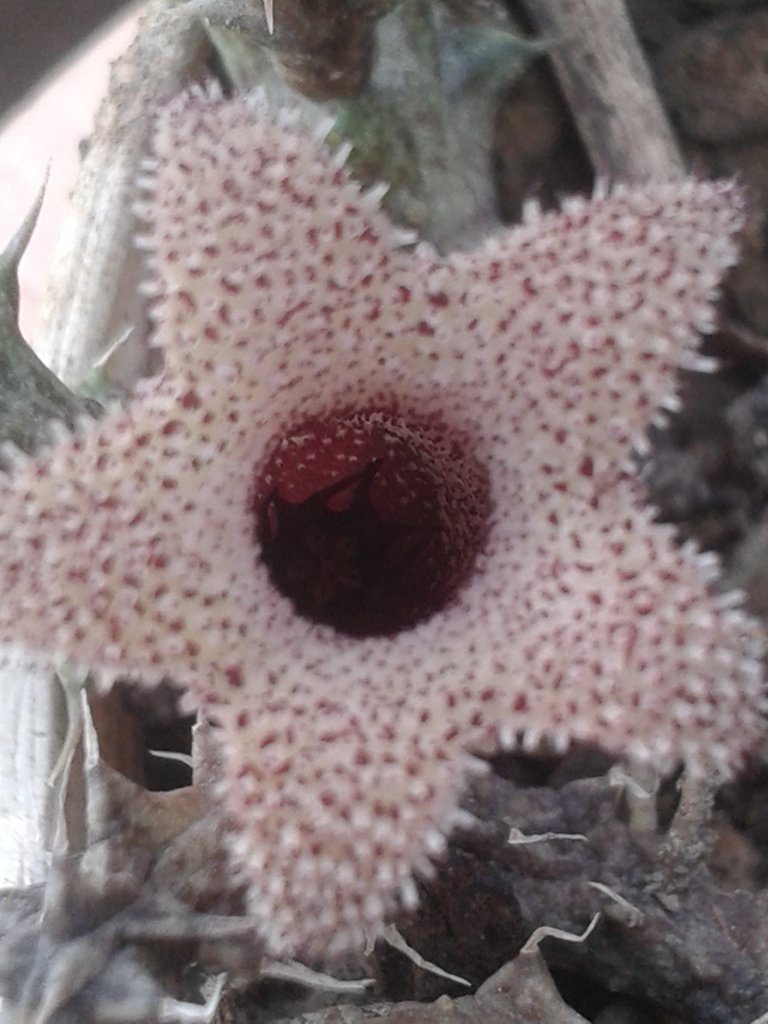

When the flower dries it acquires a very peculiar shape, like a new button.
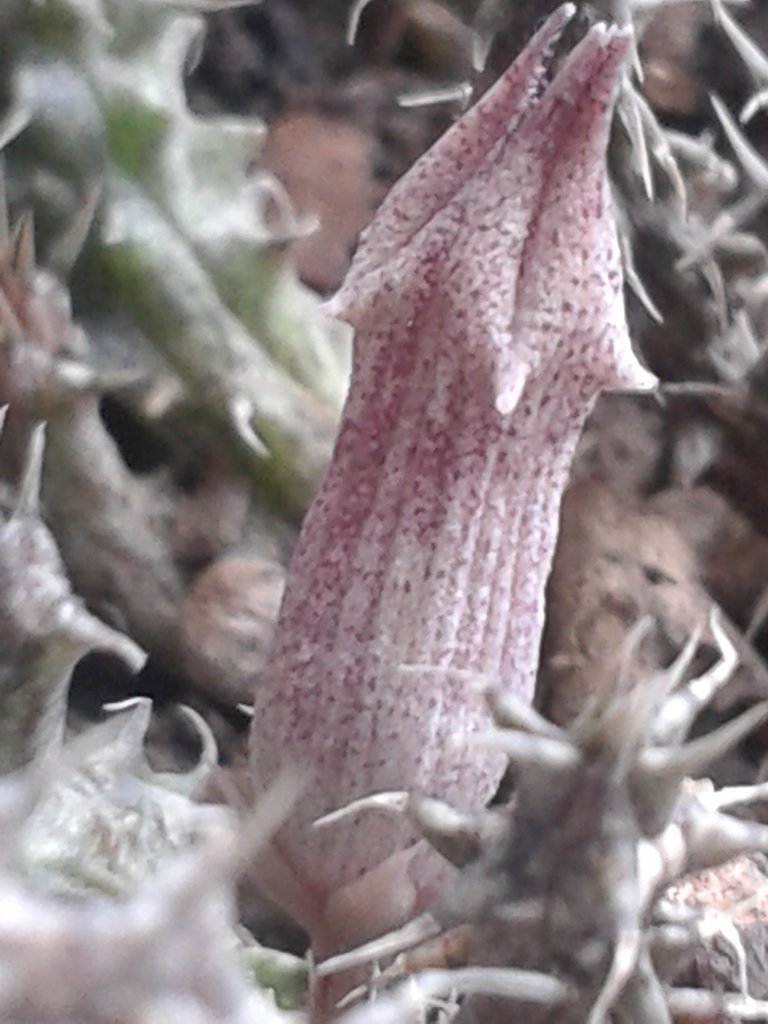
Its reproduction is easily done through cutting one of its stems and then transplanting it into a suitable substrate.
Huernia Schneideriana:
It's a succulent from the Apocynaceae family, its genus is huernia and its species Schneideriana.
It comes from Africa.
It has cylindrical stems, erect, light green in color, without leaves. The surface is covered with small spine-like extensions. They are very fleshy stems that are born more frequently from the union to the ground. They branch in such a way that their stems seem to be entangled with each other. The weight of their stems allows them to fall and be very ornamental in the baskets.
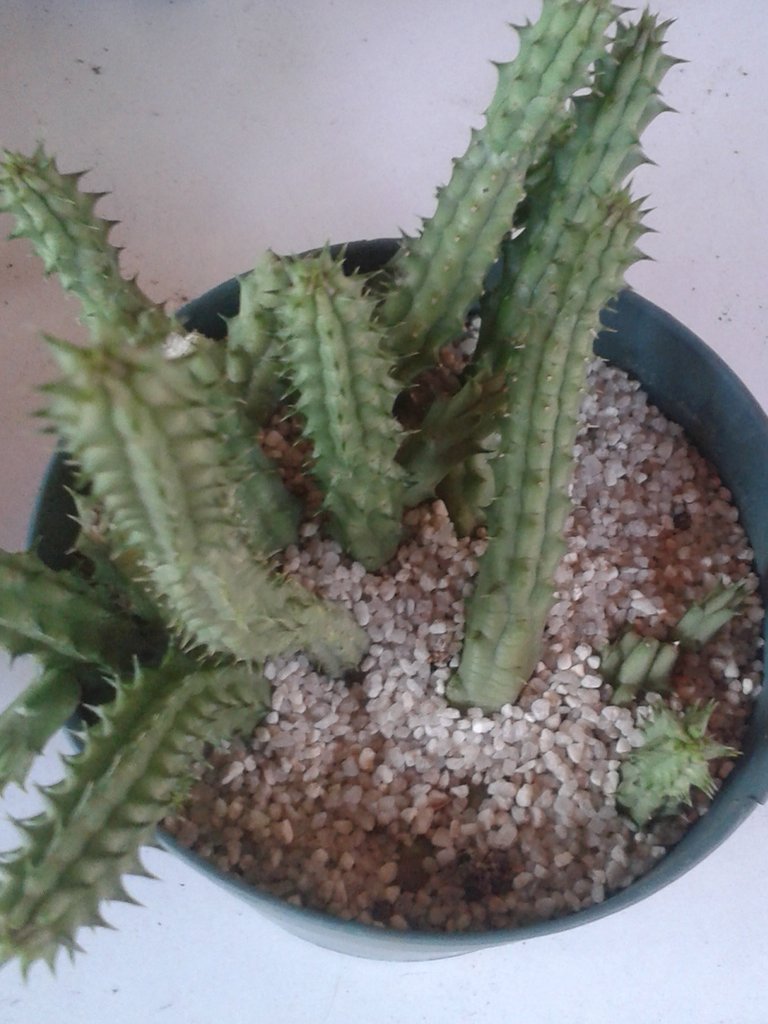
The flowers generally appear on the lower edge of the stem. The flowers have five points like a star, deep red in color and they don't have an unpleasant smell.
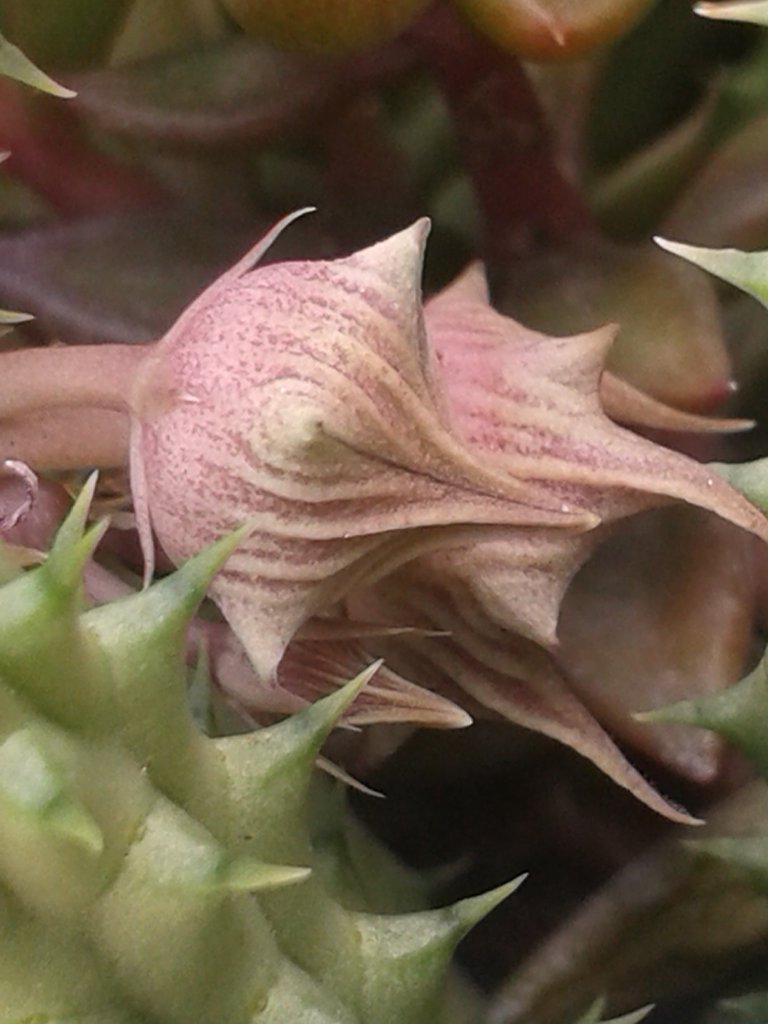
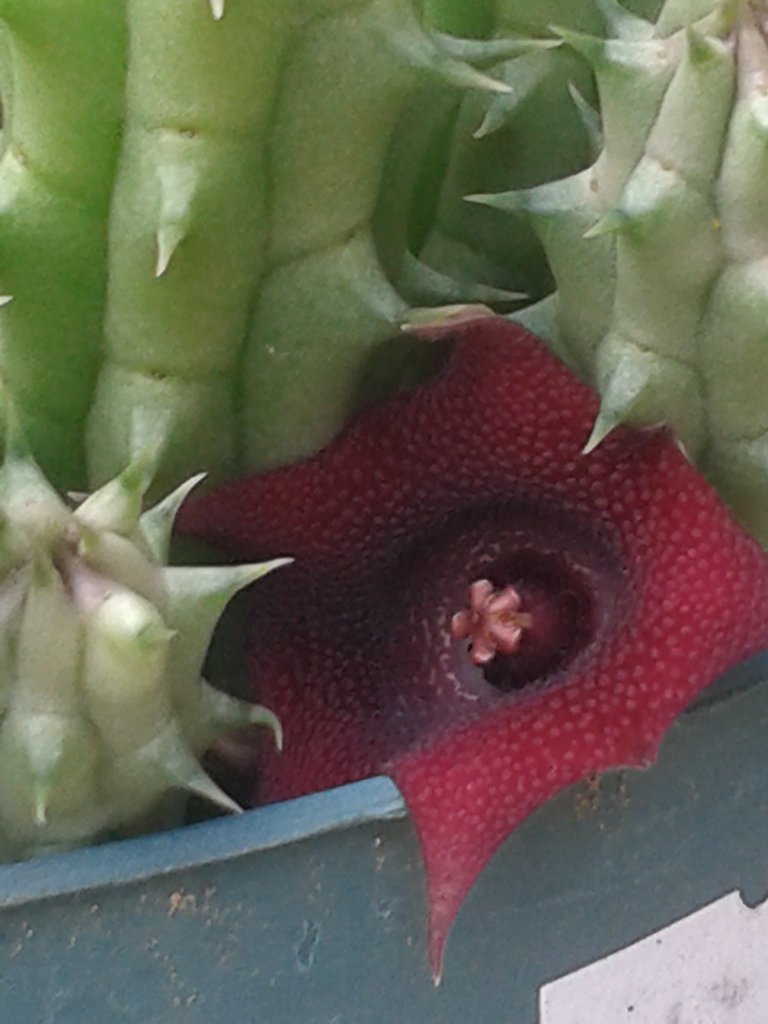
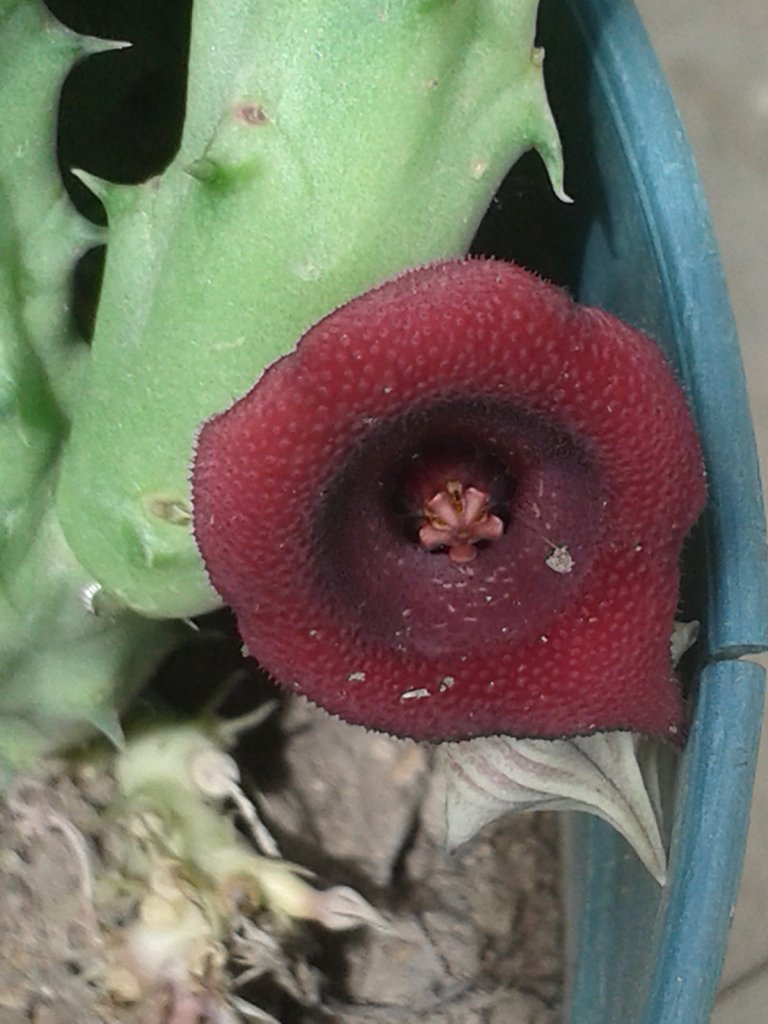
Reproduction is done more easily through the children or small stems.
It's not a plant that tolerates direct exposure to the sun.
Its substrate is with organic compost mixed with sand for good drainage.
Stapelia Gigantea:
It's a succulent of the Apocynaceae family, its genus is Stapelia and its species Gigantea.
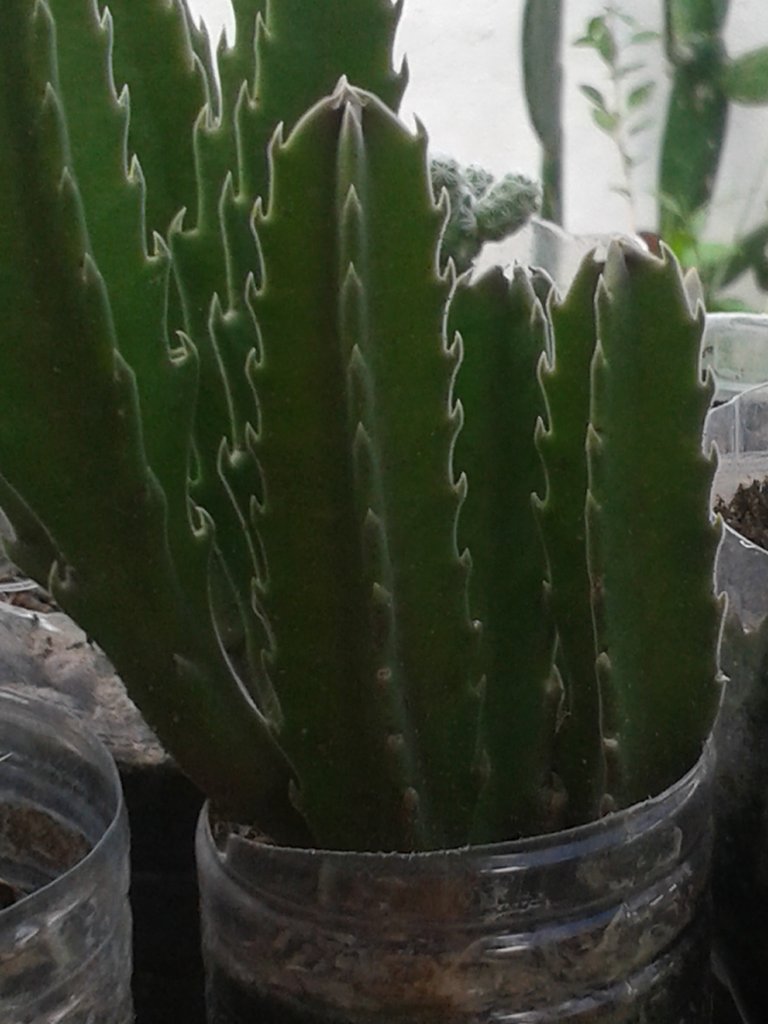
It comes from Africa.
It's also called by its common name the "carrion flower". Because its flower gives off a stench similar to that dead animal.
It's also known by the scientific name of "Gigantea" because the flower is very large. When the button appears it grows slowly until it reaches a considerable size, larger than the same plant of about 40 cm wide.
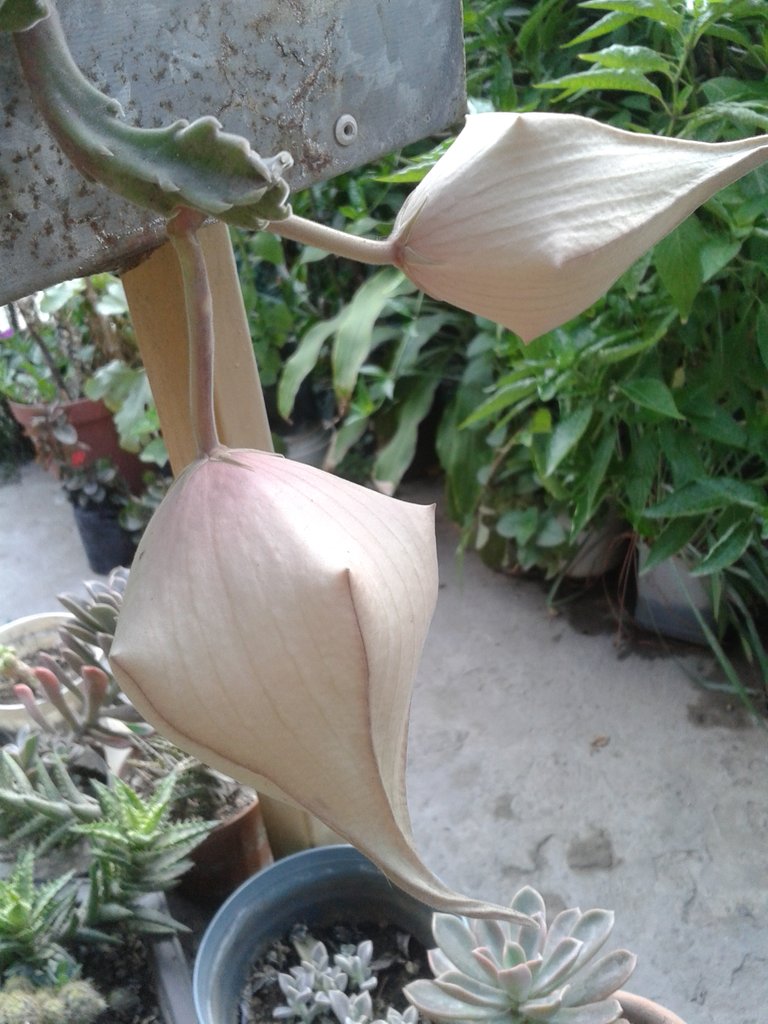
The flowers have five spikes because they have a star shape. Inside the yellow flower, it presents a relief of grooves or lines of red that stand out and the entire surface is covered by a fine hair that towards the edges becomes longer than about 1 cm.
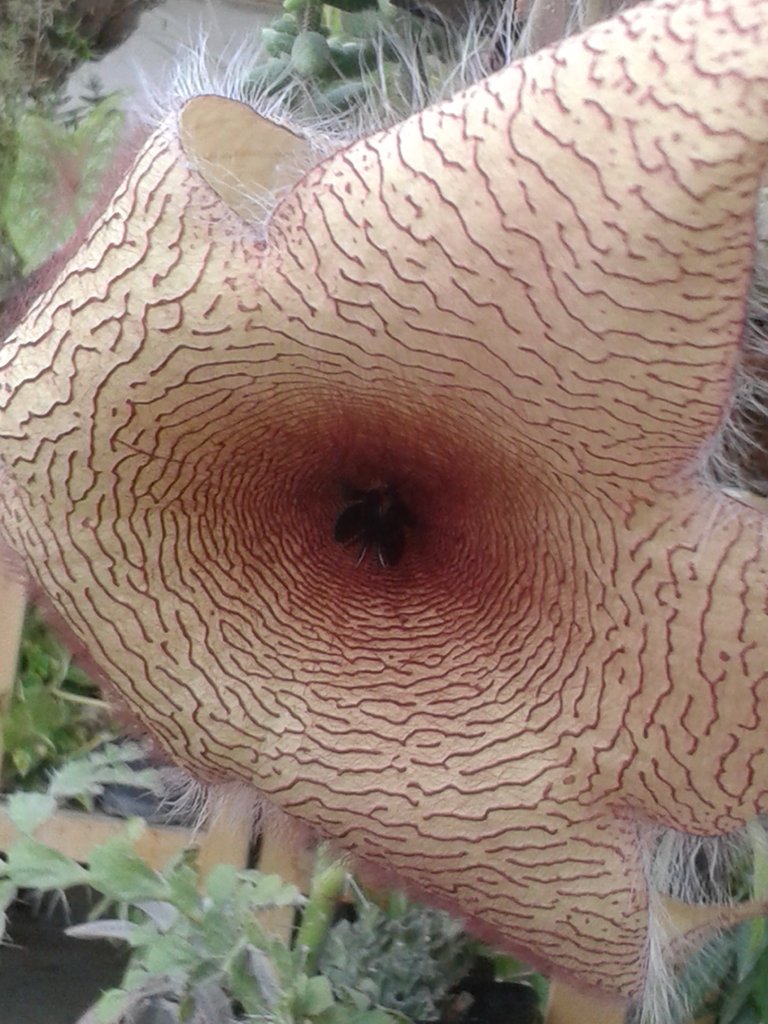
These flowers are very large, larger than the plant itself, reaching more than 40 cm. With its strong typical carrion smell that is intended to attract flies. A species of these flies will be in charge of pollinating the plant.
It's a plant with a green, thick stem with four sides and its edges are wavy. With extensions on the edge of their sides that resemble spines that they do not hav and they have no leaves. These stems have a high liquid content, the stems are born from their union to the ground and do not exceed 20 cm in height, So they are succulents for easy growing by succulent-loving beginners.
It does not tolerate direct sun exposure. Its substrate is the same as cacti and succulents, with a mixture containing sand that maintains good drainage and low humidity.
The easiest form of reproduction is done through the children or small stems of the plant. Sown under the same substrate conditions as the mother plant.
Acanthocereus tetragonus cactus:
It belongs to the cactaceae family, its family is Acanthocereus and its genus Tetragonus.

It's native to Central America.
Its common name is "Fairy Castle", due to the way it arranges its branches.
It's a slow-growing cactus and does not exceed one meter in height.
Its light green stem grows columnar and its branches have multiple radial and central white spines. Its central stem produces small stems around it, always straight and erect.
As the stems grow together in an erect way, they acquire a castle shape and hence its name as a fairy castle.
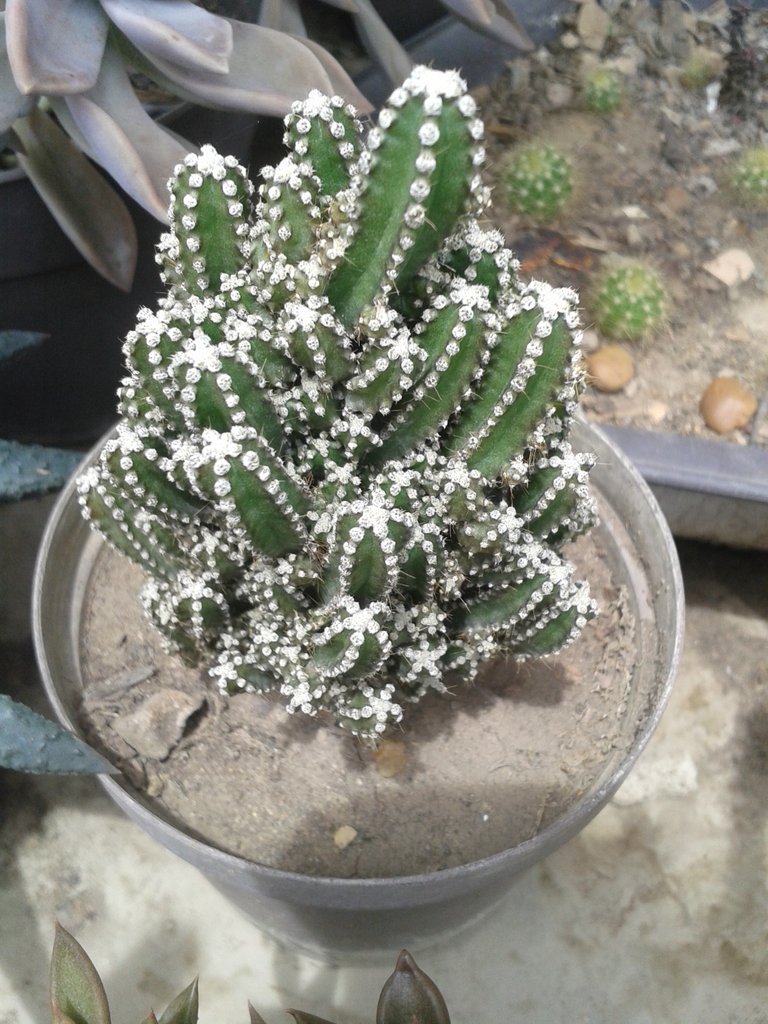
This plant tolerates semi-shade and sun exposure but with caution.
High humidity damages its roots and stems, rotting the plant.
It multiplies through the stems. The small stems or branches of its outer and lower stems are cut, allowed to heal for a week and then transplanted under a suitable substrate, equal to that of the mother plant, with organic matter and sand to avoid waterlogging which is the enemy of the cactus.
Opuntias:
1.- Opuntia Nopal:
It belongs to the cacti family, its genus is opuntia and its species is Nopal.
Originally from Mexico.
Their common names are "tuna", "chumbera" and others.
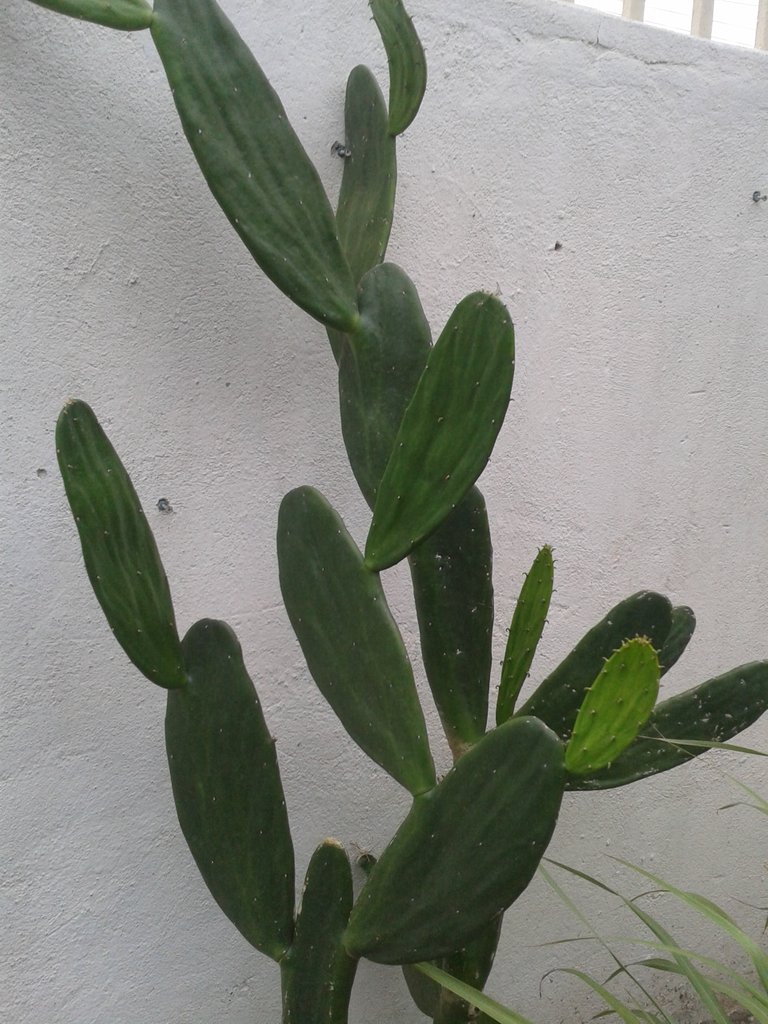
The stem is formed from the union of the leaves that join and then the lower ones change their shape and thicken to support the bush that will be formed.
It has no leaves. They are the stalks are light green. At the level of the upper edge of the stalks, the flowers develop and later become edible fruits.
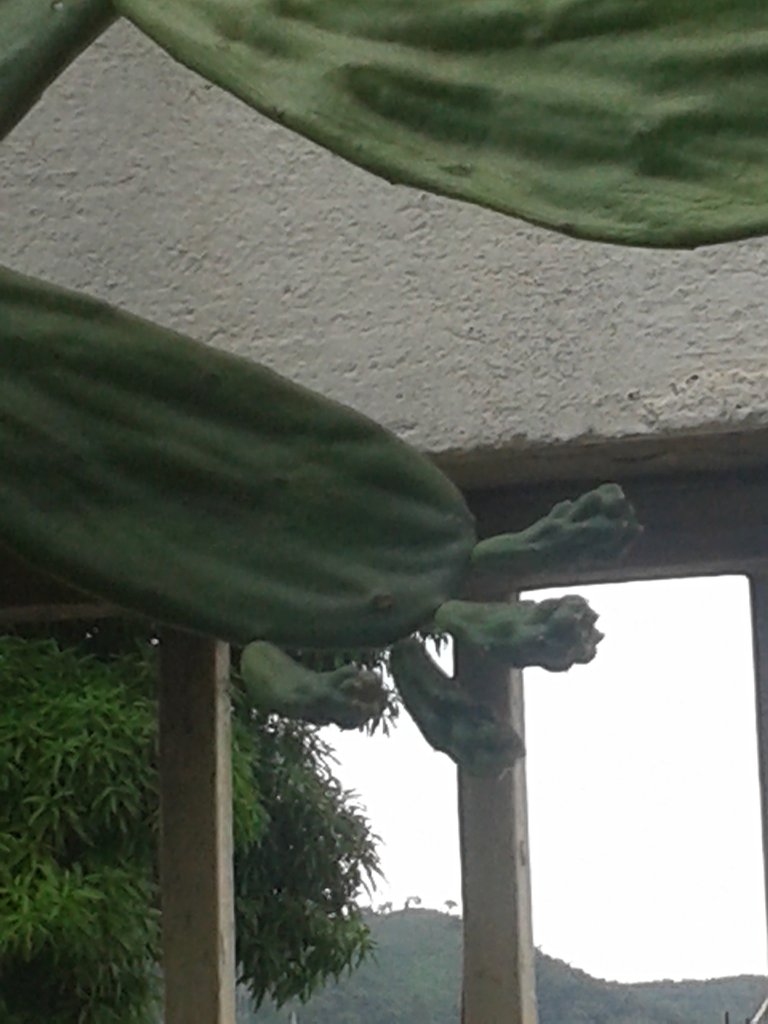
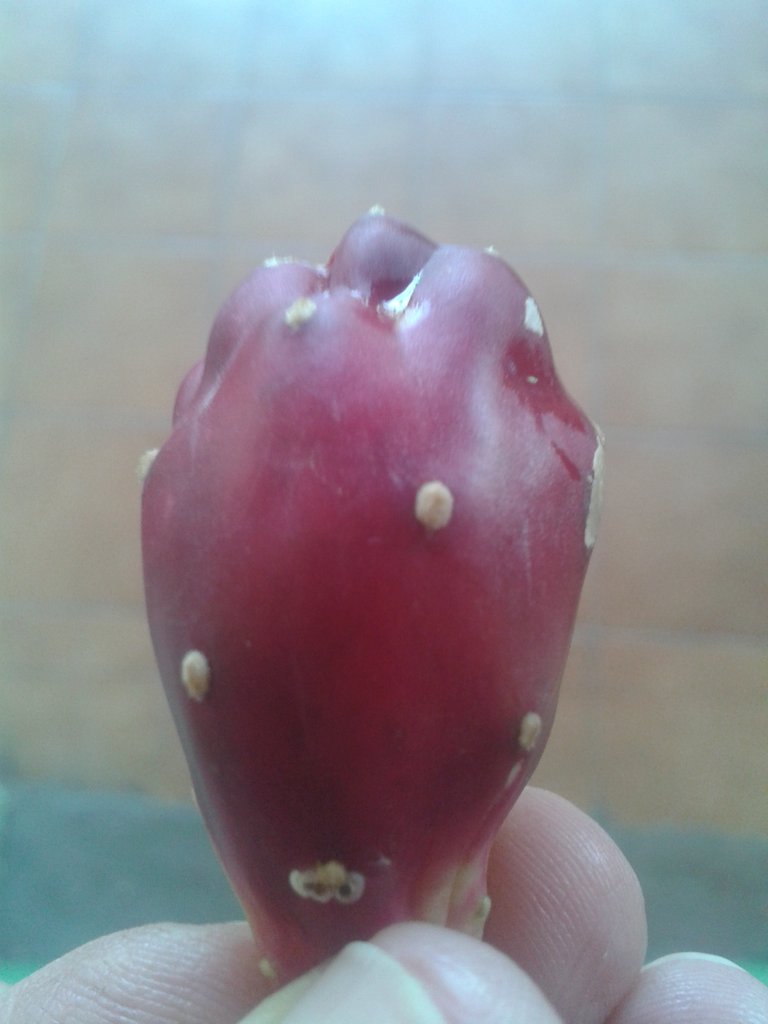
The oval stalks have many sharp spines with about 3 to 5 cm long. The leaves are edible, being used in many culinary dishes in Mexican food.
They reproduce easier through their stalks. It's sown with the same substrate conditions for cacti.
Supports direct sun exposure.
They are cacti that contain abundant liquid inside, but they should not be subjected to abundant humidity, they can't bear it, rotting their roots and stems. Since they come from arid and dry lands, they can withstand long periods of drought.
2.- Opuntia microdasys:
It belongs to the cactus family, the genus is Opuntia and the Microdasys species.
They are originally from Mexico.
Their common name is "Mickey's Ear" and/or "Angel Wings".
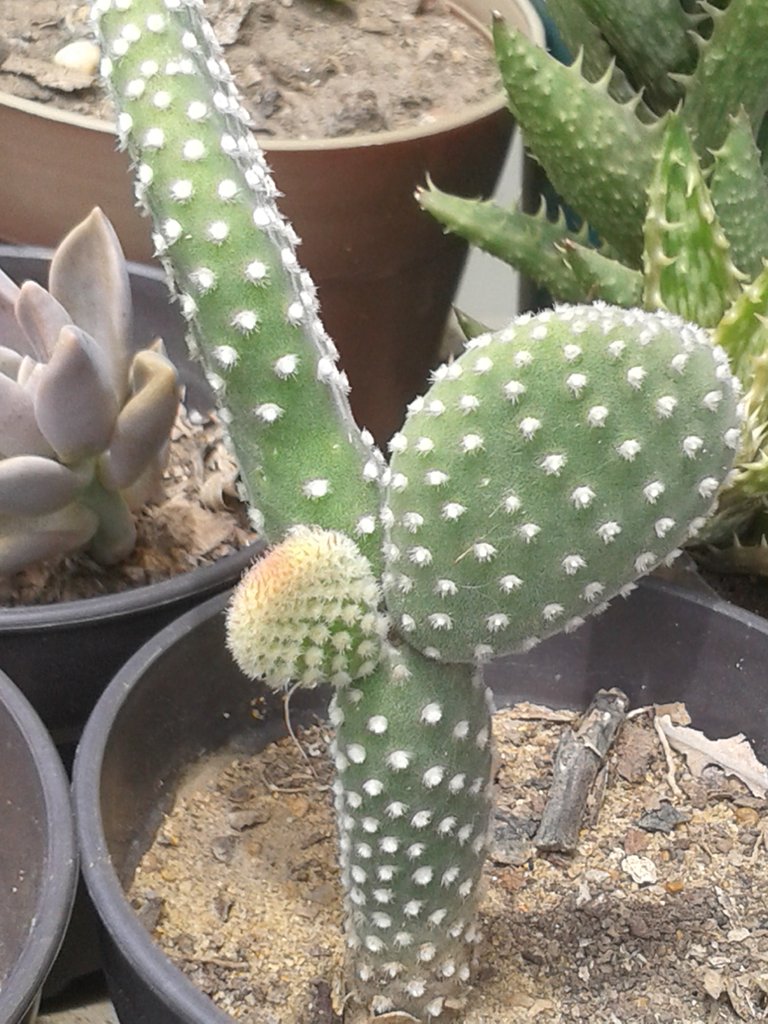
Its body is formed by the union of its stalks. The stalks or leaves of the cactus grow in the superficial portion of the ears. They are arranged in such a way that they form a very leafy cactus that can grow up to 1 mt.
The leaves are thick, oval, light green in color and with villi all over the cactus surface. These villi are very small spines.
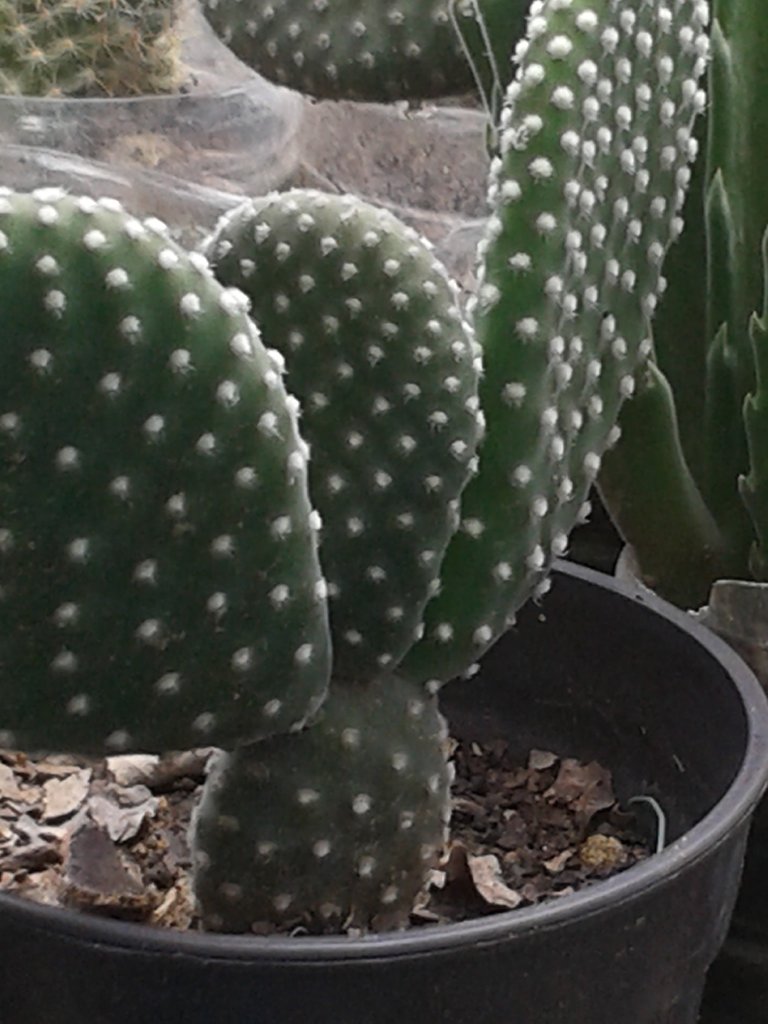
They like direct exposure to the sun and they do not like the puddling of their substrate so you should avoid constantly pouring water on them. Watering once a week is enough if it is in semi-shade and if it is in the shade, which is not ideal, it should be watered once every 15 days or when the soil is dry.
They reproduce easily by removing one of their stalks and proceeding to heal for a week, then you place it on a pot in a shady place until it can be exposed directly to the sun.
3.- Opuntia Rúfida:
It's from the cactus family, the species is Opuntia and the genus is Rúfida.
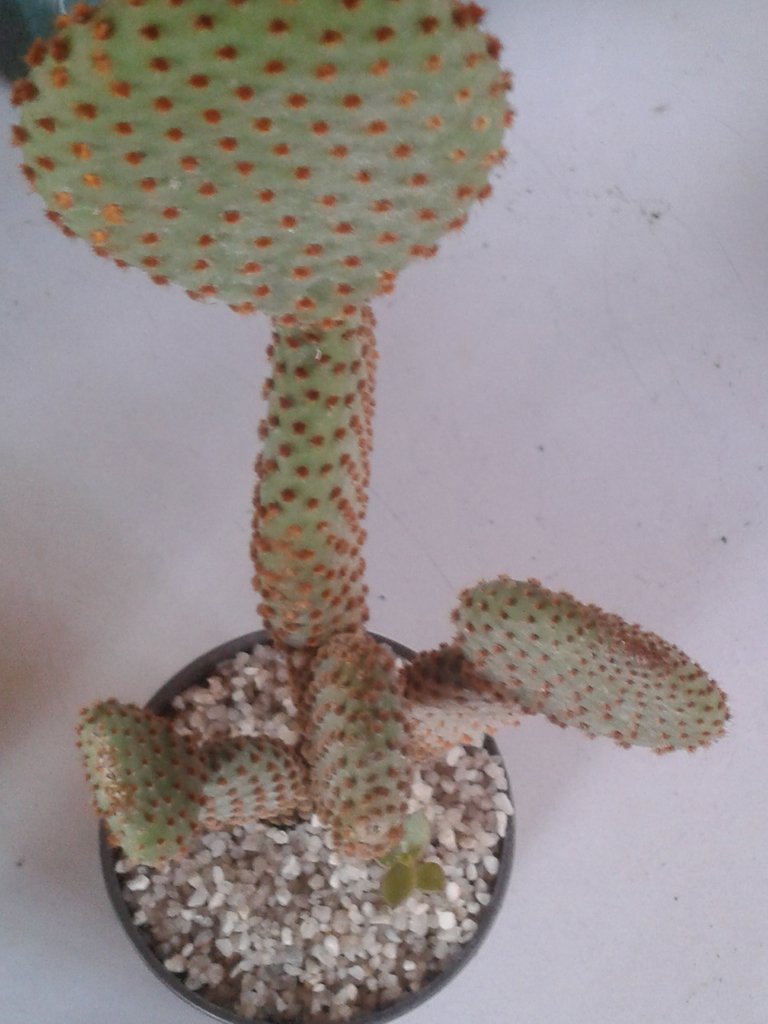
It has the same characteristics of Opuntia Microdasys, the difference is the color of the villi which are red. The rest of the characteristics, reproduction and transplantation are the same as the Microdasys, since it is a similar species to it.
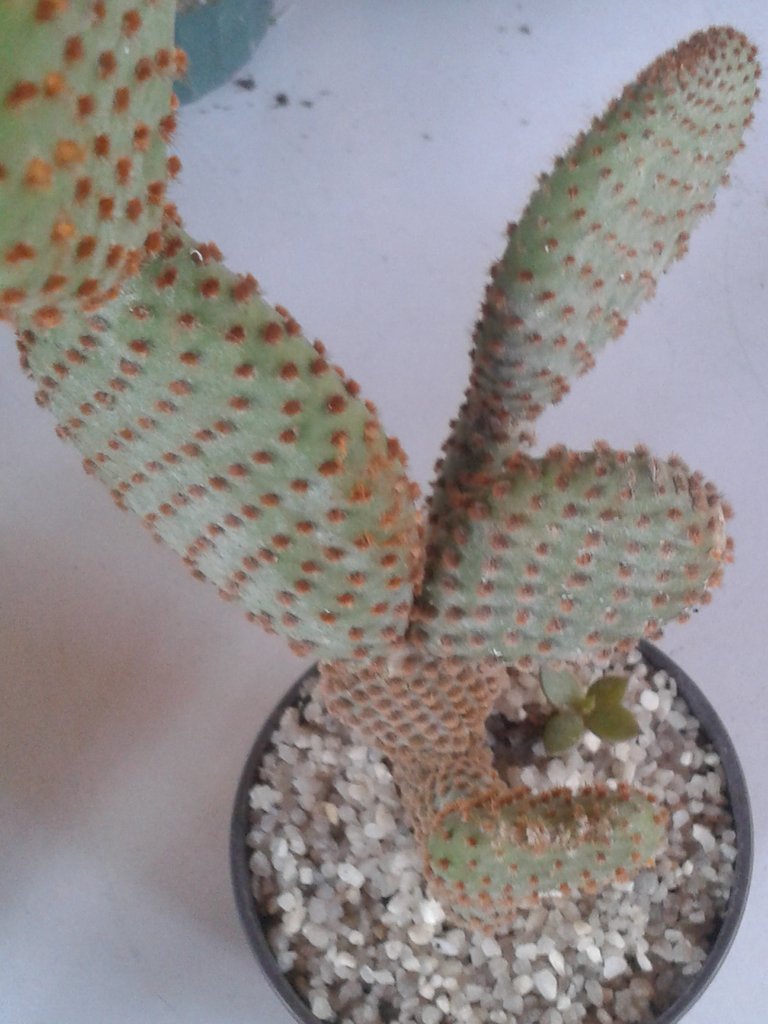
4.- Cylindrical opuntia:
It is a cactus that belongs to the cacti family, its genus is Opuntia and it is a cylindrical species.
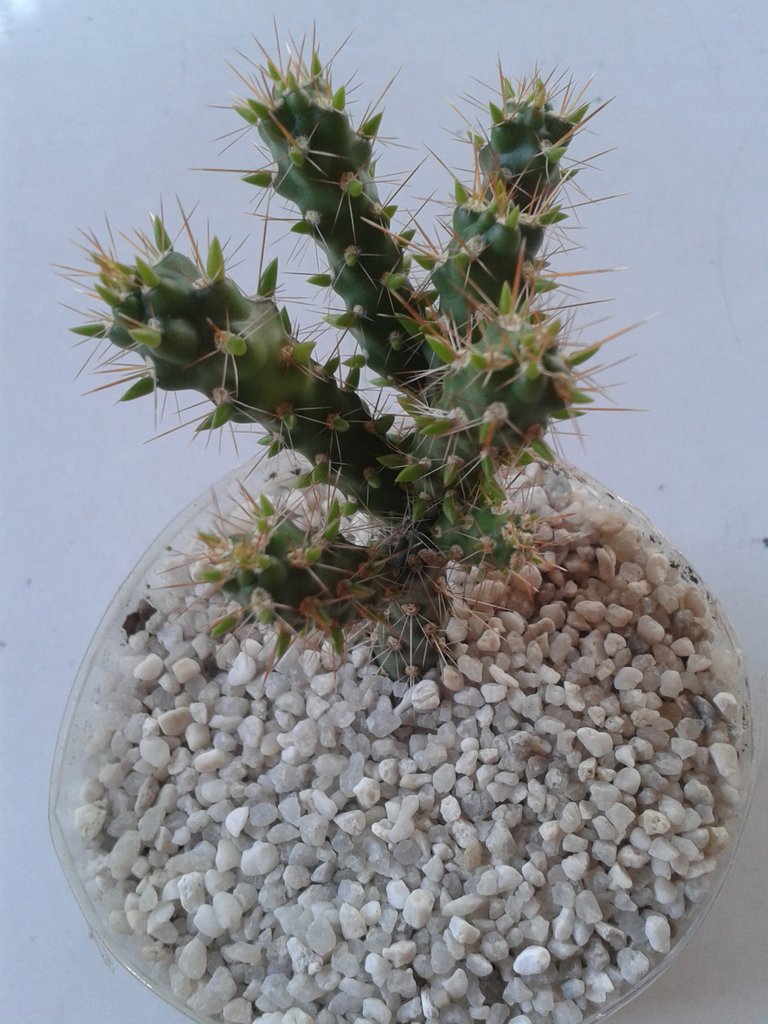
It has many branches, with an erect stem. Its shape is cylindrical and on its entire surface there are many thorns approximately 1cm long.
It has white areolas from where its spines start and there are also some
extensions that are green, they look like leaves but they are not.
Their reproduction is done by cutting a stem from the mother plant and by sowing in a substrate equal to that of the mother plant.
Direct sun exposure is adequate for this cactus.
It should not get a lot of liquid on its substrate. The ponding of its substrate does not support it, rotting its roots, so it must have little humidity in its soil.
5.- Brasiliensis Opuntia:
It belongs to the cactaceae family, its genus is Opuntia and its species Brasiliensis.
It's a highly branched cactus native to Brazil, but also from Argentina and Paraguay.
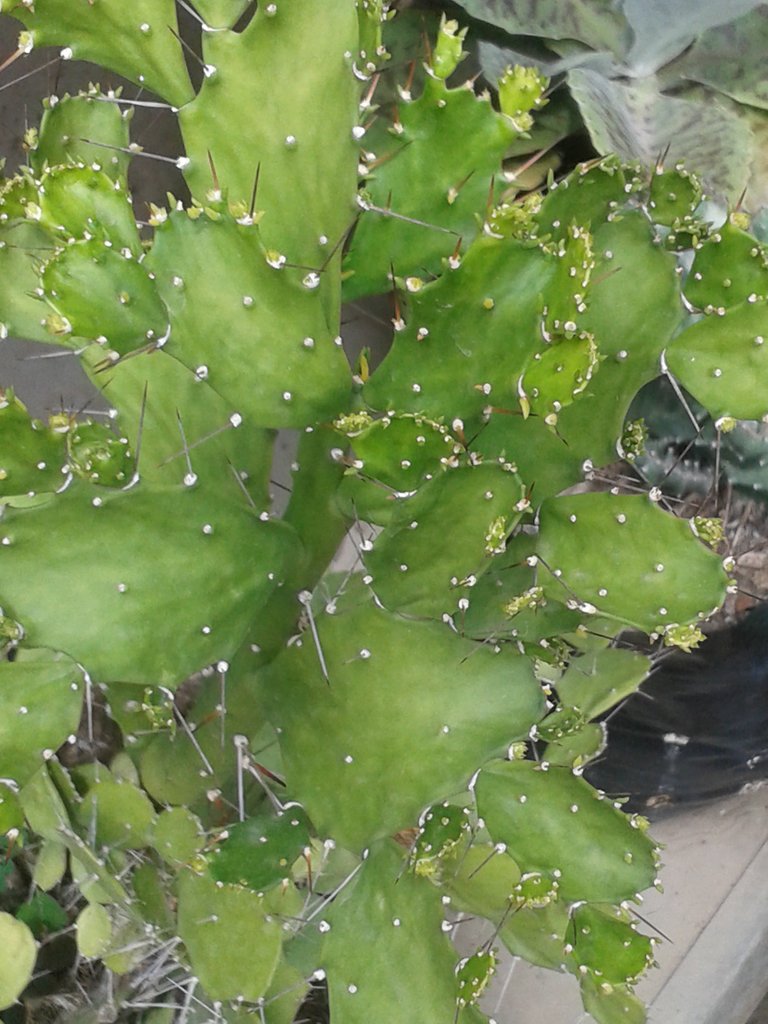
It has a cylindrical stem, from which multiple flattened leaves of light green color start, which unite and become tortuous branches and give the formation of a very bushy cactus, that reaches a large size, approximately 5m in height.
It has its stalks or flattened leaves with multiple spines, long and sharp that can measure 2 cm long.

Although it reaches great heights on land, while in the pot and when it's still very small it has a very bushy appearance.
It likes exposure to the sun although it also supports semi-shade.
The reproduction is carried out through the stems or pencas. One of them is cut down and planted in suitable soil.
The right soil or substrate should contain compost mixed with sand for good drainage.
If you place it in a pot it becomes a very good ornamental specimen.
Cactus Epiphyllum:
It's a plant of the cactus family, the genus is Epiphyllum.
It's native to Central and South America.
This cactus is perennial, it has stems formed by long extensions joined by short, narrow and fibrous segments. Its long stems are dark green, with irregular edges, with three-sided stems, with long and very sharp spines of approximately 5 cm.
They develop long aerial roots in some of their branches that make them join the walls, trunks or stakes, to continue growing and strengthening their tortuous stems. To make a cactus with a size of more than 1 meter high with long extensions next to it.
They are cacti that do very well in semi-shade, because they do not tolerate direct exposure to the sun or shade.
They can grow very well in pots, where they hang very branched.
The flowers are spectacularly beautiful. First they are small green buds, with many petals attached with a red coloration on their edges.
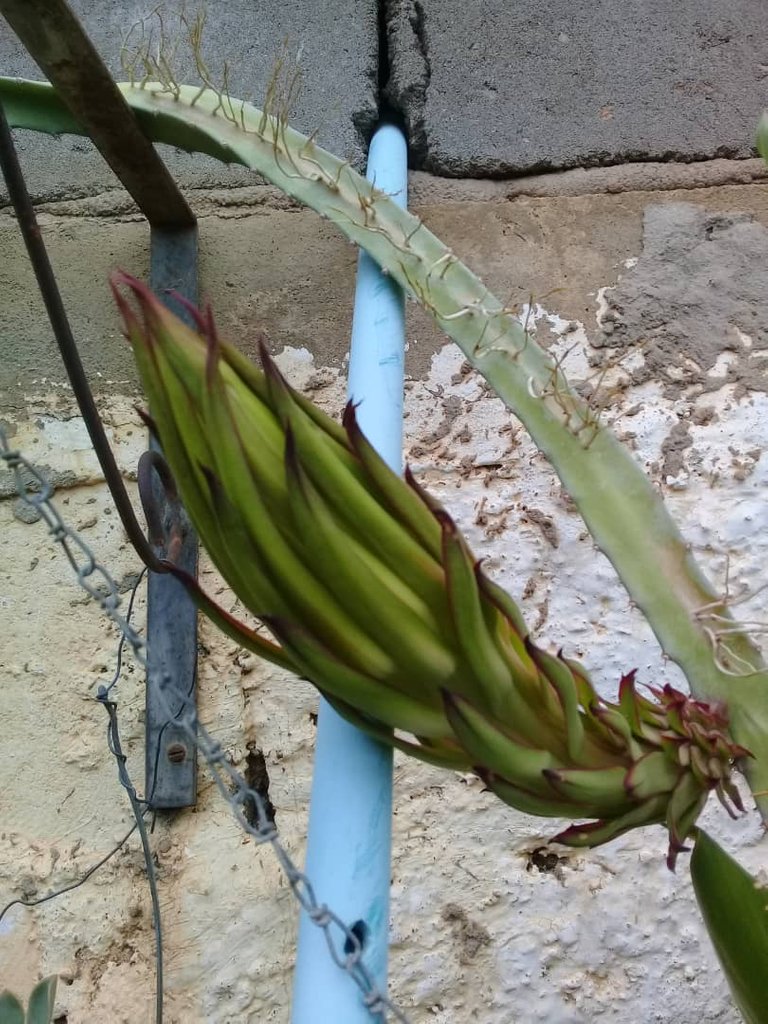
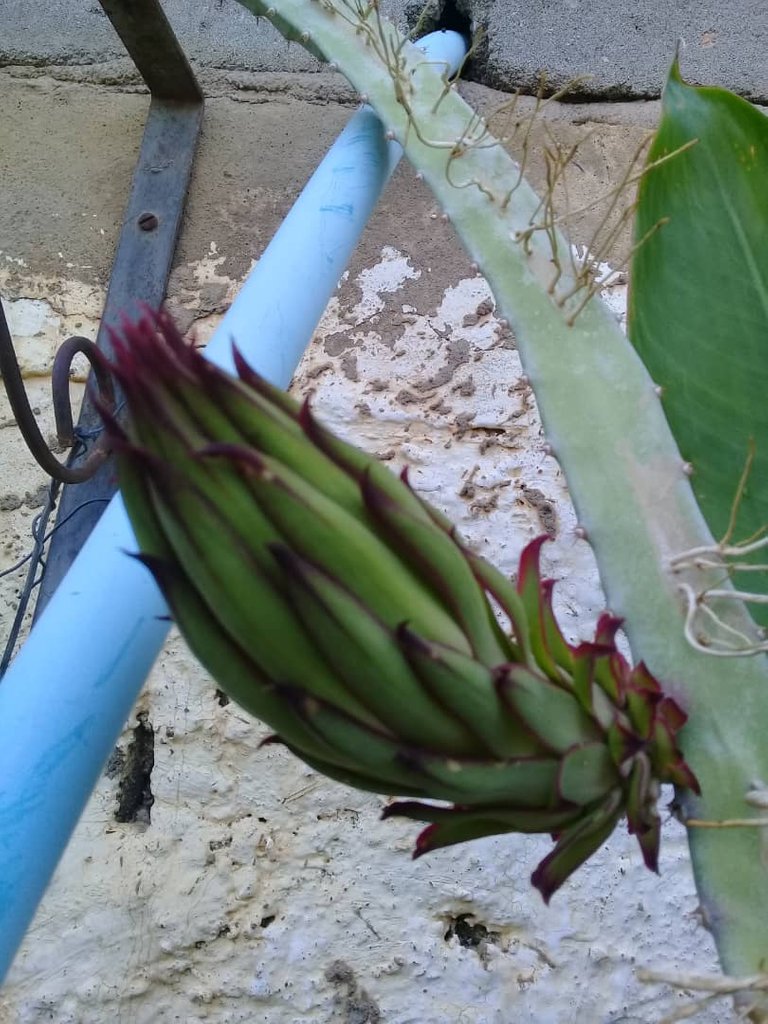
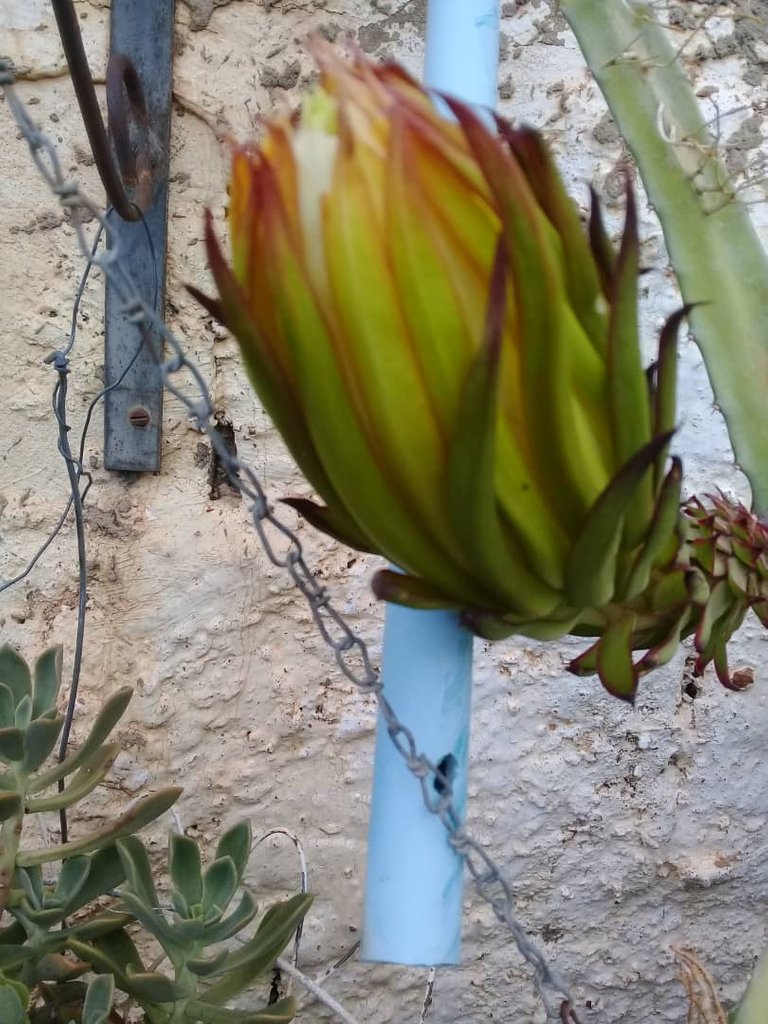
Then they develop to form a beautiful flower that acquires different colors according to its species. They can be white, pink, red OR this beautiful color.
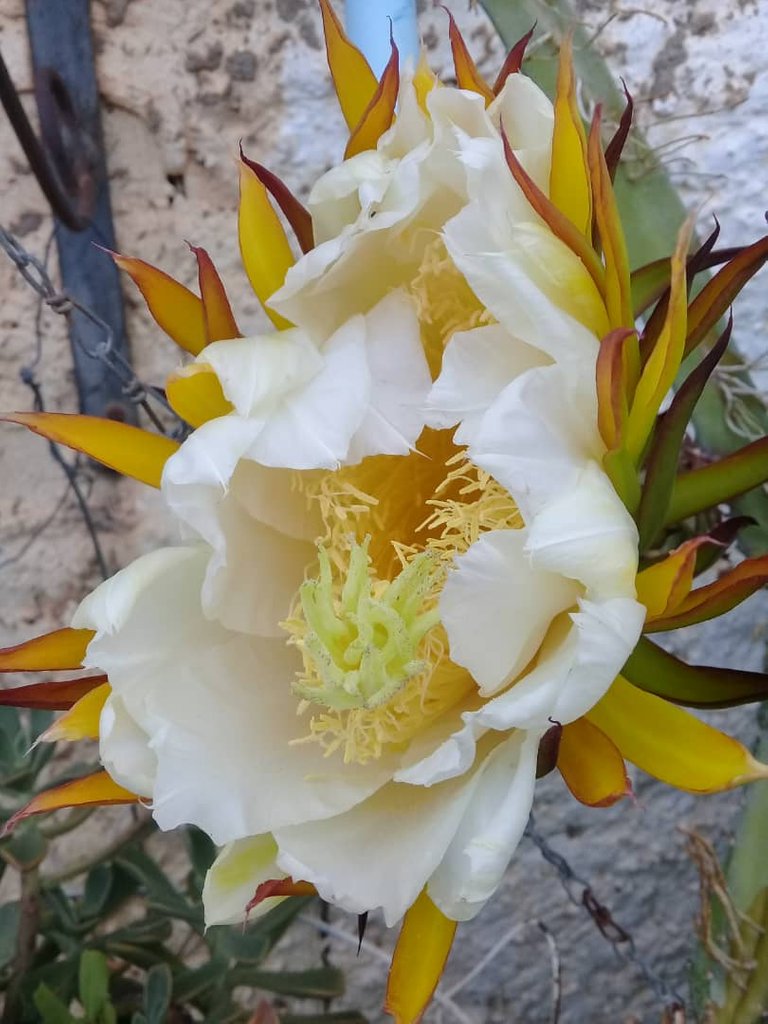
The flowers open at night, remaining for a few days, then they dry out, leaving a bulb in its final portion that grows to form a fruit that is edible.
This plant is young and has not yet developed said fruits.
Lastly, this plant needs humidity, but not waterlogging. Its soil always has to maintain an adequate level of humidity.

For its reproduction only one of the small stems of the plant is cut and it is sown with a substrate with abundant organic fertilizer and gravel to maintain humidity.
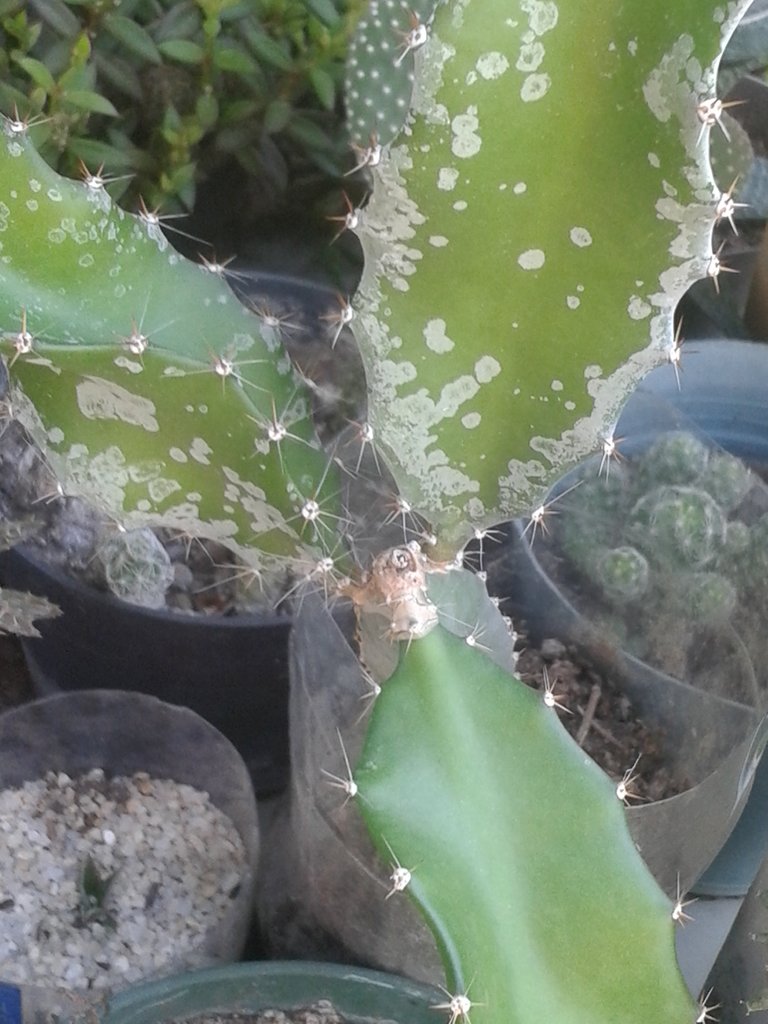
These are some of my cacti from my Amazing Nature, as an entry to the contest hosted by @adalger in his Amazing Nature of september 2020 #04.
I never really cared for cacti and succulents, but the more pictures I see, the more I'm starting to like them. Yours are very beautiful!
Good that you like them now!!@simplymike.
Thanks for your comment.
I especially like the beautiful flowers that come out of them. So many thorns and its flowers are beautiful.
Thanks @qurator for your support always.